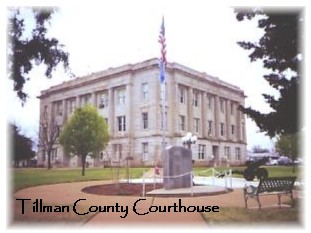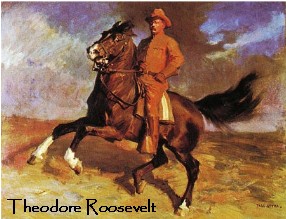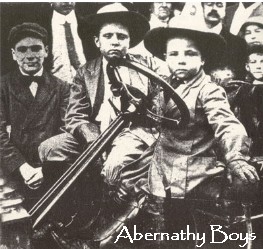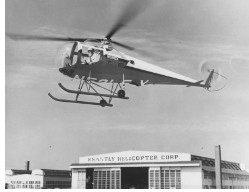|

My name is Michelle Wood from Frederick, OK. I have found some
of my Grandma's (Madge Cohea Dombrowski) old pictures and newspapers from Tillman County. I thought I would share them with
you. Some of the photos date back to the early 1900’s
(CLICK LINK BELOW TO FEW 100S OF PHOTOS)
TILLMAN COUNTY HISTORY CLICK HERE!

TILLMAN COUNTY
Located in southwestern Oklahoma, Tillman County was organized at 1907 statehood
from a portion of Comanche County. Frederick is the county seat. Tillman County's boundaries changed in 1911 and 1924 when
portions of Kiowa County were added. Named for U.S. Sen. Benjamin R. Tillman of South Carolina, Tillman County is bounded
by Kiowa County on the north, Comanche and Cotton counties on the east, Jackson County on the west, and the Red River (Texas)
on the south. Lying within the Red Bed Plains physiographic region (a subregion of the Osage Plains), Tillman County has 879.21
squares miles of land and water. It is drained by the North Fork of the Red River, Otter Creek, and Deep Red Creek.
According to a 1981 archaeological survey report Tillman County has forty-one
known archaeological sites. Of those reported, only one had been tested. However, through investigations of the area, scientists
suspect activity during the Archaic (6000 B.C. to A.D. 1) and Plains Village (A.D. 1000 to 1500) periods. In the 1600s Spaniards
were the first Europeans in the area, using the Great Spanish Road that paralleled the North Fork of the Red River.
In 1803 the United States purchased from France the Louisiana Purchase, which
included the future state of Oklahoma. Expeditions were formed to explore the area. In southwestern Oklahoma, Randolph B.
Marcy headed one of those excursions in 1852 in search of the headwaters of the Red River. Due to American Indian unrest in
the area, Camps Radziminski and Augur were established in 1858 and 1871, respectively. In 1867 the Medicine Lodge Treaty created
a reservation for the Kiowa, Comanche, and Apache (KCA) in southwestern Indian Territory. By the 1880s prominent Texas ranchers,
Daniel and William Thomas Waggoner and Samuel Burk Burnett, leased grazing lands from those tribes.
In 1892 the Jerome Commission began enrolling the Kiowa, Comanche, and Apache
in preparation of opening their reservation to non-Indian settlement. On August 6, 1901, a lottery was held to open those
lands, and in December 1906 the area known as the Big Pasture was opened. After the 1901 lottery the towns of Texowa (renamed
Olds and finally Davidson in 1902), Gosnell (became Frederick in 1902), Manitou, and Siboney sprang into existence. Eschiti
and Kell City (merged to become Grandfield), Harriston (became Loveland), Hollister, Isadore, Parton, and Quanah developed
after 1906. At the turn of the twenty-first century Davidson, Frederick (county seat), Grandfield, Hollister, Loveland, Manitou,
and Tipton continued as incorporated towns.
At 1907 statehood Frederick was designated as the county seat. Until a courthouse
was built, county officials rented space in several buildings and city hall. The architectural firm, Tonini and Bramblett,
designed the structure. The Charles M. Dunning Construction Company began work on the courthouse in 1921. The Tillman County
courthouse is listed in the National Register of Historic Places (NR 84003455).
Tillman County's economy has been based primarily on agriculture. Principal crops
have included cotton, corn, wheat, oats, Kaffir corn, and milo. In 1907 farmers had planted 53,110 acres in cotton, 34,583
in corn, and 17,554 in wheat. In 1930 livestock numbered 9,041 cattle, 4,084 mules, 2,190 horses, 1,647 sheep and goats, and
695 swine. That year Tillman County had 521,777 acres in farmland and the average size farm was 188.8 acres. There were 2,763
farms, and tenants operated 60.6 percent of them. An agricultural annual report for 1963 counted 38,000 cattle, 20,500 poultry,
3,200 sheep, 2,000 hogs, and 500 milk cows. That year farmers had 153,000 acres in wheat, 70,200 acres in cotton, 25,500 in
sorghum, and 21,300 in barley. Through the years the number of farms have dwindled from 1,724 reported in 1950 to 587 counted
in 2000. However, through farm consolidation the average size farm has increased to 819 acres as reported at the turn of the
twenty-first century.
A majority of the industries in Tillman County have supported farmers. By 1930
thirty-one cotton gins, six cotton oil mills, and six grain elevators operated. At that time an oil and gas refinery was located
in Grandfield. In 1941 the Frederick Army Air Field opened. Cadets received training on UC-78s (trainer/light transport aircrafts)
and B25s (medium bombers). The field later developed into the Frederick Industrial Park. Relocating from New York City the
Centra Leather Goods company came to Frederick in 1955. In 1971 the Kellwood Plant in Frederick produced children's jeans.
At the turn of the twenty-first century only two manufacturing firms reported employing more than fifty individuals.
Waterways and American Indian trails formed the earliest transportation routes.
After the 1901 and 1906 land openings railroads connected the recently established towns with outside markets. In 1901 the
St. Louis and San Francisco Railway constructed a line from Texas north across the Red River to Davidson. Between 1901 and
1903 the Blackwell, Enid and Southwestern (BES) Railroad (later acquired by the St. Louis and San Francisco Railway) built
a line from Darrow (in Blaine County) traversing south through Manitou and Frederick. In 1907 the Wichita Falls and Northwestern
Railway (later the Missouri, Kansas and Texas Railroad) connected Grandfield, Loveland, Hollister, Frederick, and Tipton.
Motorists used U.S. Highways 70 and 183 as well as State Highways 5, 5C, 36, and 54. Municipal airports operated near Frederick,
Grandfield, and Tipton.
Early settlers soon built one- and two-room schoolhouses. In Manitou a three-month
subscription school operated in the winter months of 1902-03. In 1906 Frederick had a kindergarten sponsored by the Mothers'
Culture Club. Between 1938 and 1942 the Tillman County Junior College offered higher education. At the turn of the twenty-first
century education was offered at public schools in Davidson, Frederick, Grandfield, and Tipton.
At 1907 statehood Tillman County had 12,869 residents. Numbers steadily increased
from 18,650 reported in 1910, to 22,433 in 1920, and 24,390 in 1930. After the population peaked in 1930 it continually declined
from 20,754 in 1940 to 14,654 in 1960. The censuses for 1970 and 1980 indicated 12,901 and 12,398, respectively. In 1990 Tillman
County had 10,384 inhabitants compared to 9,287 in 2000.
A well-publicized event occurred in April 1905. Pres. Theodore Roosevelt, accompanied
by John R. Abernathy and others, departed from Frederick to the Big Pasture to participate in a wolf hunt. At the turn of
the twenty-first century the Tillman County Historical Museum (Pioneer Heritage Townsite Center) offered buildings and artifacts
relating to local history. An annual Oklahoma Cotton Festival was held in Frederick in September. Outdoor enthusiasts enjoyed
a primitive camping area at Hackberry Flat Wildlife Management Area and fishing at Lake Frederick. In addition to the courthouse
in Frederick, the J. D. Laney House and the Ramona Theater were listed in the National Register of Historic Places.
Grandfield's historic places included the Grandfield Downtown Historic District, the William and Mabel Donahoo Hubbard House,
the Humphreys Drugstore Building the Rock Island Depot Building and the Tillman County Bank of Grandfield

ROOSEVELT'S WOLF HUNT
Theodore Roosevelt, who favored single statehood for Oklahoma, was president when
the Twin Territories joined to form the state in 1907. He visited the area during the Territorial Era and after statehood.
His most eventful trip occurred in 1905, when he accompanied John R. Abernathy and others on a wolf hunt in southern Oklahoma
Territory. Roosevelt first became interested in Abernathy in January 1903 when Sloan Simpson, a friend from Fort Worth, Texas,
described Abernathy's ability to catch wolves with his bare hands. Roosevelt thought that Simpson was exaggerating, but several
months later the story was corroborated by another of the president's friends from Texas, Cecil A. Lyon. Roosevelt accepted
his friends' invitation to participate in one of Abernathy's wolf hunts.
On April 5, 1905, Roosevelt traveled through Indian Territory on his way to a
Rough Riders reunion in San Antonio, Texas, making short speeches at several towns along the railroad between Vinita and Durant.
After attending the reunion, Roosevelt returned to Oklahoma Territory, arriving in Frederick on Saturday, April 8. While giving
a speech to the thousands gathered to greet him, he noticed Comanche Chief Quanah Parker and called him to the speaker's stand
to shake his hand. Immediately after the speech, the hunting party left for the Big Pasture, an area of 480,000 acres of open
range in present Tillman, Comanche, and Cotton counties. Members of the party included the president's personal physician,
Dr. Alexander Lambert, several former Rough Riders, a number of cattle ranchers, and Quanah Parker.
Although no hunts were planned for Sunday, they took place on each of the next
four days. Roosevelt impressed the other participants with his riding ability during the wolf chases, as he was the only one
who could keep pace with Abernathy. At least one other member of the party attempted to catch a wolf, but only Abernathy succeeded.
He caught several wolves using a technique of waiting until the wolf leapt at his outstretched arm and then grasping its lower
back teeth or tongue before it could bite down, thus keeping the animal's canines from doing any major damage. Roosevelt was
impressed with Abernathy's ability and greatly enjoyed the hunts as well as other camp activities. On Thursday evening, April
13, 1905, the president left Frederick to continue his adventures on a bear hunt in Colorado.

Abernathy Boys
In 1910, brothers Bud and Temple Abernathy rode on horseback from Frederick,
OK to New York City to meet former president Teddy Roosevelt. For the ride home they changed their mode of transportation
to a 1910 Brush Runabout, making the 2500 mile trip in a record setting 23 days. Quite a feat a time where there were no interstates
and desperados still roamed the wild west. Even more impressive is the fact that Bud and Temple were only six and ten years
old.

Brantly Helicopter
Historical photo of a Brantly B-2 flying near the factory in Frederick Oklahoma
. The model B-2 was certified in 1959 and the factory was moved in 1967 or 68. Since the model B-2A was introduced in 1962,
this picture was most probably taken in the period 1959-62.

Miss Oklahoma 2008
Full Name: Lindsey Harrington
Hometown:
Frederick, OK
Birthday: 2/15/86
College: Oklahoma State University
Charities:
The Rise School, Mya Gonzalez Foundation, Women's Football Clinic
Dream Job: Finding a job that I look
forward to going to everyday
Hobbies: Cooking, gardening, target shooing, fishing, working out
Biggest
Influence/Role Model: My Memaw
Favorite Movie: Lonesome Dove
Favorite Song:
"Don't Stop Believing" by Journey
Favorite Sport: Football
Favorite Food: Mexican
food
|

